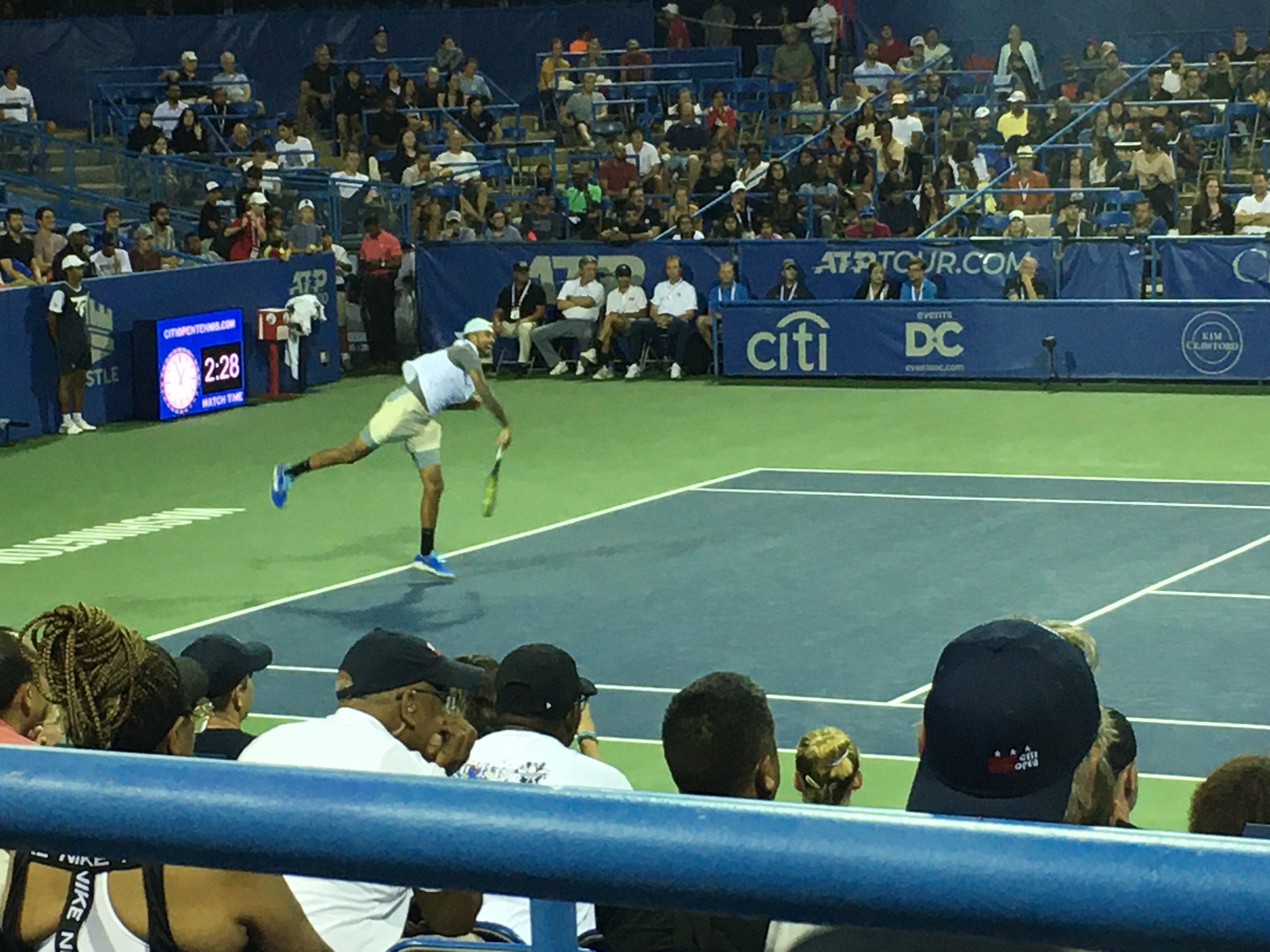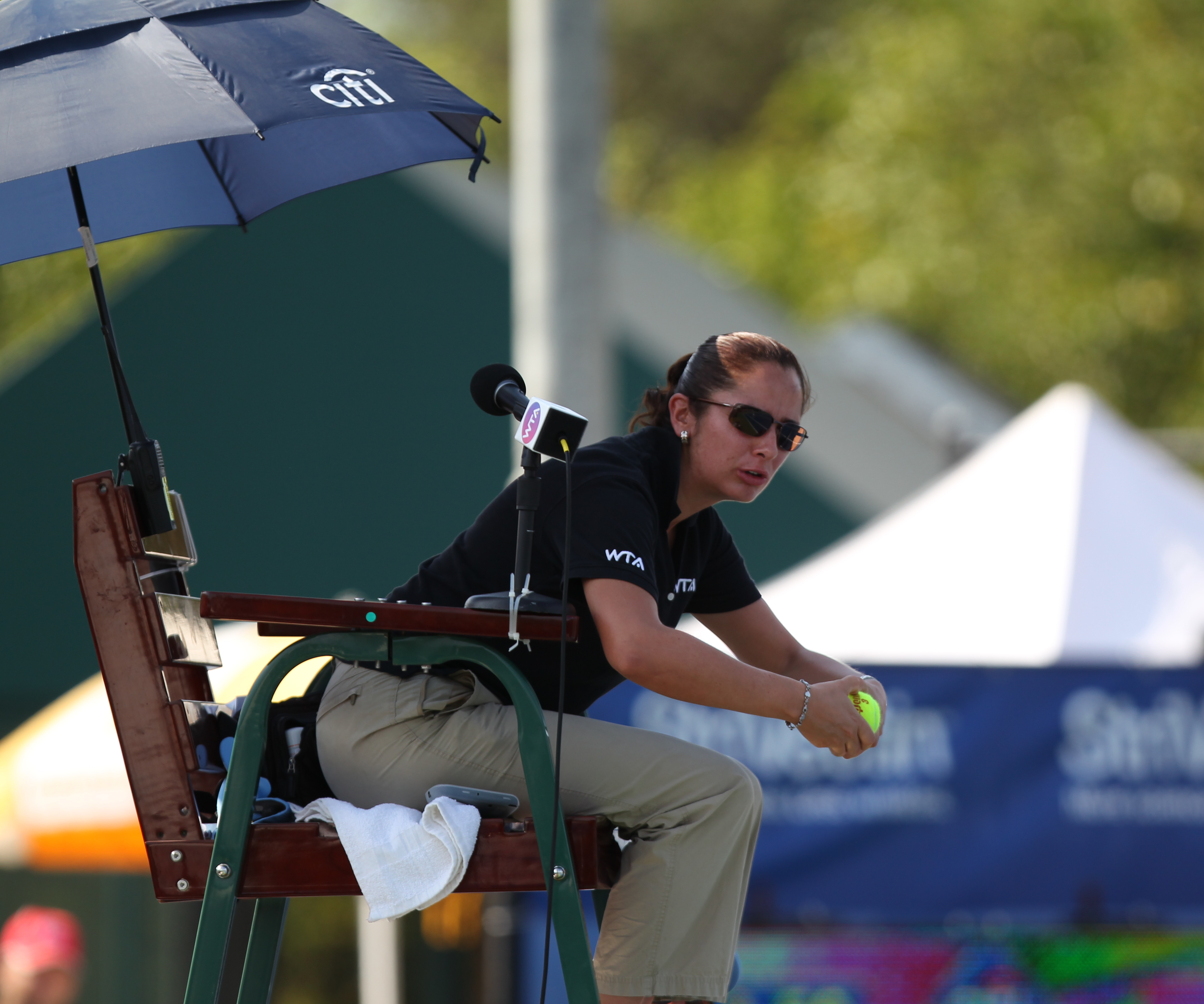So what is a let in tennis?
In the game of tennis, a ‘let’ is a specific occurrence that interrupts the flow of play. It often happens when a served ball touches the net but still lands in the correct service box (sometimes called a service let). Unlike a fault, which is a serve that fails to land within the designated serve box or is otherwise illegal, a let in tennis calls for the serve to be replayed.
This rule ensures fairness and consistency during a match, as the net’s interference can unpredictably alter the ball’s trajectory, potentially disadvantaging the receiving player. Some people have called for the let to be abolished and have it as part of the game, if a player hits the net and the ball goes over it is their point.

The application of the let rule is consistent across both professional and recreational tennis. In professional tennis, the adherence to this aspect of the rules is strictly monitored by officials to maintain the integrity and fairness of the competition.
At the recreational level, while players may not always have officials present, the let rule is still recognized and followed for the enjoyment and fairness of the game. Tennis matches are governed by a comprehensive set of rules that are designed to ensure that the competition is as fair and enjoyable as possible for the players and spectators alike.
The let rule, while a small part of the entire rulebook, is crucial in upholding this principle. Even the best players like Novak Djokovic and Serena Williams are affected by lets so it is something that will affect you.
Understanding the Let in Tennis
In tennis, a let is a situation where a play is stopped and must be replayed, often occurring when a served ball touches the net. This concept is crucial both in professional matches and recreational play, affecting the rhythm and outcome of games.
Definition and Origin of the Let
The let rule in tennis stipulates that if a serve hits the net but still falls into the correct service box, the serve is deemed a let and must be retaken. The origin of the term comes from the French word “filet” meaning “net,” and over time it evolved into the term “let,” signifying an obstruction. Historically, the rule was established to ensure fairness, acknowledging that a net cord can unpredictably alter the served ball’s trajectory.
Let Calls During the Service
During service in tennis, a let is called under specific circumstances:
- Net Cord on Serve: If the ball hits the net cord and lands in the appropriate service box, a let is called, and the server is granted another serve.
- Multiple Lets: There is no limit to successive lets; each time a served ball clips the net and lands in the service box, another let is called.
It’s important to note that only a serve can result in a let when the ball hits the net. In other scenarios, such as during a rally, if the ball hits the net and goes over, play continues.

Other Let Calls in Tennis
There are times during a tennis match when an umpire, or a player, may need to stop play and ask for the point to be replayed again. A good example of this is if something unexpected happens that affects the play.
An example of this is if tennis fans in the crowd shouts out during a point or a stray ball finds its way onto the tennis court from an adjacent court. In these instances, the game would be stopped and the entire point replayed.
This type of let is a less common scenario.
Differences Between Professional and Recreational Play
At a professional level, let calls are precisely monitored during a match. High-speed cameras and electronic sensors can detect the slightest touch of the ball on the net cord, ensuring an accurate call.
Conversely, at a recreational level, calls often rely on the players’ observation and honesty, as advanced technology isn’t usually available. Get the wrong opponent and this can be very difficult. I am sure we have all played with people who always call 50/50 balls out and always expect their ball to be called in. You know who you are..
- Professional Play:
- Use of electronic equipment and line judges
- Strict adherence to rules
- Recreational Play:
- Calls based on players’ judgment
- More relaxed enforcement of lets, depending on the scenario, normally the tennis players call the let themselves.
This enforcement discrepancy emphasizes the need for a clear understanding of the let rule by all players, irrespective of the competitive level.
Impact of Lets on the Game
In tennis, lets have a regulatory role in service plays, ensuring fairness and adherence to the tennis rules. They can temporarily halt play and provide players with a reattempt of service.
Effect on Player’s Momentum
When a player’s first serve strikes the top of the net and lands within the correct service court, a let is called, and the server is granted an additional serve. This can disrupt a server’s rhythm or assist in relieving the pressure of a potential double fault. For a receiver, it may both break concentration and provide more time to anticipate the next serve.
- First Serve Lets: Often seen as a second chance to make an aggressive play without penalty.
- Second Serve Lets: This can be particularly tension-inducing, as a subsequent fault results in a double fault.
Strategies Following a Let
Players must quickly recalibrate their strategies following a let.
- Servers may choose to adjust the power or spin on their subsequent serve to avoid a double fault or to catch the receiver off guard.
- Receivers must stay alert, maintaining readiness to respond to the service despite the interruption.
The tactical interplay after a let is guided by players’ observations of their opponent’s habits and the match context.
Let Technologies and Rules
In modern tennis, specific technologies and rules come into play to determine a let during service. They provide clarity and precision, reducing human error in officiating.

Electronic Line-Calling Systems
Electronic line-calling systems have revolutionized tennis officiating, enhancing accuracy and reducing controversies. The International Tennis Federation (ITF) approves such systems for use in professional matches. These systems utilize electronic sensors around the court, sometimes embedded within the court surface. Hawk-Eye, one of the most renowned, employs multiple cameras to track ball trajectory, while the more recent Trinity system incorporates additional sensors for improved precision. When a let is detected—typically when the ball touches the net on a serve—an audible noise is instantly produced, alerting players and spectators.
- Key Components of Electronic Systems:
- Cameras or Court-Embedded Sensors
- Real-Time Audible Signals
- Ball Trajectory Tracking
Role of the Chair Umpire
Despite advancements in technology, the chair umpire retains a pivotal role in officiating tennis matches. They oversee the match and make the final call when situations are ambiguous or when technology fails. The ITF regulations stipulate that chair umpires must announce a let immediately if the electronic system fails or if they visually identify a let that the system misses. They also ensure the net is at the proper height, as per ITF standards, and attached securely to the net post.
- Responsibilities of the Chair Umpire:
- Making Final Calls on Lets
- Overseeing Electronic Systems
- Ensuring Net Height and Security
Official Rules by the International Tennis Federation
The ITF governs the official rules of tennis, including the precise definition and handling of let situations. A serve is called a let when:
- The ball served touches the net, strap, or band, and lands in the correct service box.
- Something outside the play disrupts the service.
The ITF also addresses scenarios where replays of points are necessary. Video replays, alongside electronic systems, are sometimes used to review complex situations not easily resolved by sensors alone. The objective is always to maintain fair play and accuracy in the game.
- ITF Rules on Lets:
- Serve touches net and lands in the service box
- External disruptions during service
The incorporation of electronic line-calling systems and the definitive role of the chair umpire, under the auspices of the ITF’s official rules, have become fundamental to the adjudication of let calls in tennis.
Frequently Asked Questions
The subsections below address common inquiries regarding let serve in tennis, clarifying their impact on play, specific rules governing their occurrence, the distinction from faults, recent rule changes, and comparison to table tennis let rules.
How does a let serve affect play in tennis?
When a server hits a let during a service, the serve does not count, and the server must serve again. This temporarily halts play but does not penalize the server.
What is the rule regarding let serves on second serves?
The rule for a let serve on a second serve is identical to a first serve; the server is allowed to re-serve without penalty.
Is there a limit to the number of let serves that a player can have?
There is no limit to the number of let serves a player can have in a game. Each let is replayed without consequence.
How is a let in tennis different from a fault?
A let in tennis occurs when a served ball hits the net but still lands in the service box; this differs from a fault, which is a serve that either fails to land in the service box or misses without touching the net.
In what way has the rule on tennis let serves changed recently?
There has not been a recent universal change in the rules for let serves in professional tennis; however, some exhibition matches and minor leagues have experimented with eliminating lets to speed up the game.
How is a let in tennis distinguished from a let in table tennis?
In tennis, a let serve is replayed without penalty, whereas in table tennis, a let may occur due to various interruptions, not solely net contact, and the point is also replayed.
Related Articles;
Complete Tennis Terms and Definitions (2024) – Tennis Pursuits
What is an Ace in Tennis? The Complete Definition – Tennis Pursuits
How To Hit The Slice Shot – Tips From a Pro in 2024 – Tennis Pursuits




Comments are closed.